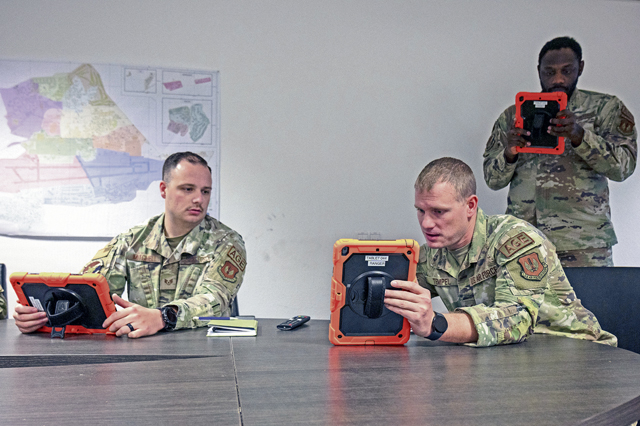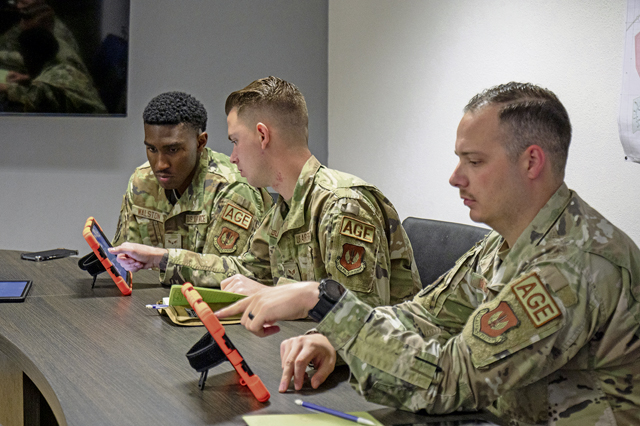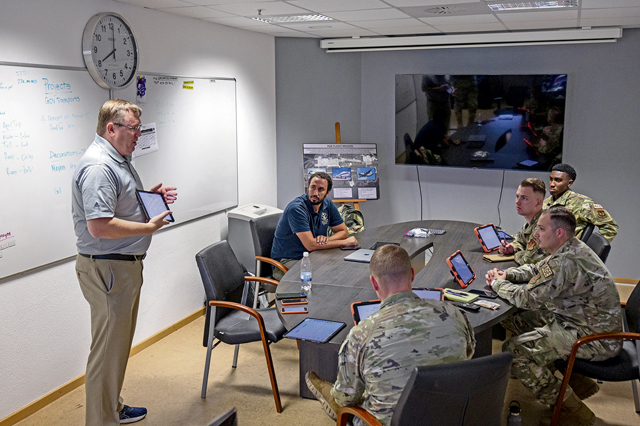
Aerospace ground equipment flights are a major piece of all flightline operations, especially at Ramstein Air Base, where the 86th Maintenance Squadron AGE flight supports not just one, but two wings.
Ramstein’s AGE Airmen are in charge of the maintenance and timely delivery of the ground equipment, enabling crew chiefs to put 86th Airlift Wing aircraft in the skies and take care of aircraft transiting through with the 521st Air Mobility Operations Wing.
“One of the things we say is ‘There’s no air power without ground power,’” said U.S. Air Force Tech. Sgt. Alexander Tempel, 86th MXS AGE section chief. “We provide all the equipment that’s used to work on the aircraft while it’s on the ground.”

Tempel also outlined the variety of equipment used which included ground power units, heating, air conditioners, stands and lighting totaling to more than 350 pieces of equipment used at Ramstein AB.
With the size of equipment being moved around and the scale of operations here, the importance of organization in the dispatch section of AGE cannot be understated.
“Our primary responsibility in dispatch is to cover flightline activities,” said U.S. Air Force Staff Sgt. Zachary Mitchell, 86th MXS AGE noncommissioned officer in charge of dispatch. “24/7, 365 days a year, we always have to have someone here to deliver equipment to the aircraft because the mission never stops.”
Currently, the dispatch section relies on a system dating back to the start of the Air Force: a pencil, paper and a radio.
“Our dispatch process right now is very analog,” said Tempel. “We get a call on the radio and we write it down on a piece of paper. We like to say the drivers are their own boss out there. Yes they are being requested, but they have to use their own knowledge and experience to prioritize what aircraft is going to need what.”

U.S. Air Forces in Europe – Air Forces Africa recently purchased the RANGER AGE Management System for all of the AGE units across the major command. This software seeks to modernize the AGE dispatch process by allowing digital requests, queuing and logging of all AGE services.
“Overall, I think this change will make operations much smoother,” said Mitchell. “I think our run times will become quicker and we can eliminate missed runs all together.”
According to Mitchell, the RANGER system will streamline operations by replacing the manual process of radios and paper logs with a digital platform that allows dispatchers to assign tasks electronically and track requests in real time. Drivers will receive job assignments directly to their devices, reducing delays and improving task prioritization.
The system helps prevent missed deliveries and allows for better analysis of response times and operational efficiency through automated logging and timestamps. By cutting down on manual communication, RANGER also reduces the chance of miscommunication, improving overall safety and accuracy.


